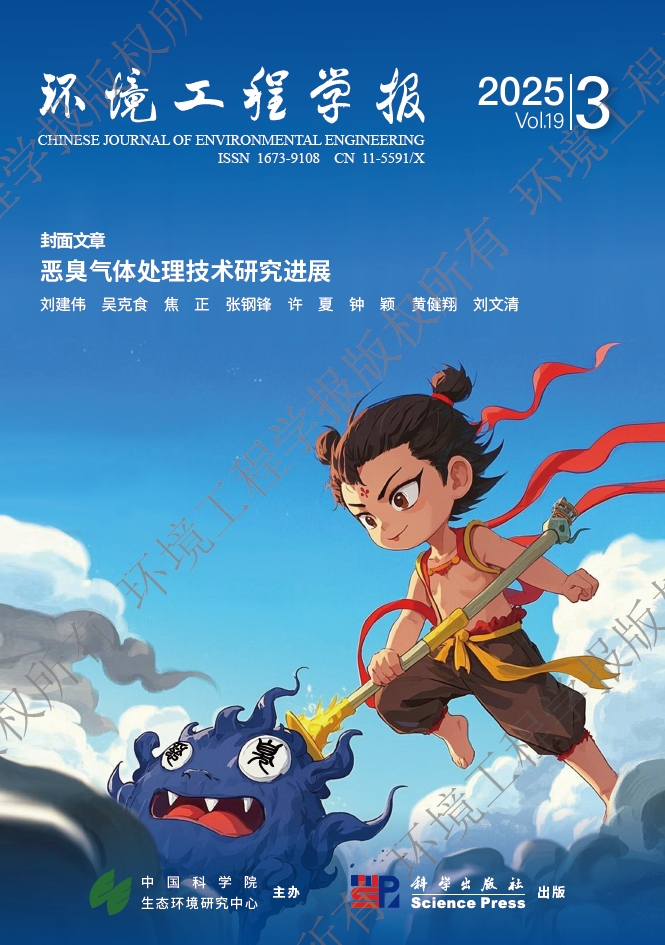|
[1]
|
武雅丽,姚顽强.可生物降解润滑剂的研究.西北大学学报(自然科学版), 2002,32(2):169-171 Wu Yali, Yao Wanqiang. A research on biodegradable lube oil. Journal of Northwest University (Natural Science Edition), 2002,32(2):169-171(in Chinese)
Google Scholar
Pub Med
|
|
[2]
|
孙霞,陈波水,谢学兵,等.N-月桂酰基谷氨酸作为润滑油生物降解促进剂的研究.材料导报, 2008, 22(2):124-131 Sun Xia, Chen Boshui, Xie Xuebing, et al. Study of N-lauroyl glutamine as biodegradation accelerator for lubricant oil. Materials Review, 2008,22(2):124-131(in Chinese)
Google Scholar
Pub Med
|
|
[3]
|
Bartz W. J. Lubricants and environment. Tribology International, 1998,31(1-3):35-47
Google Scholar
Pub Med
|
|
[4]
|
余磊,王毓民.生物降解汽油机油的试验性研究.西安公路交通大学学报, 2001,21(4):81-85 Yu Lei, Wang Yumin. Tentative study on the biodegradable gasoline engine oil. Journal of Xi’an Highway University, 2001,21(4):81-85(in Chinese)
Google Scholar
Pub Med
|
|
[5]
|
杨宏伟,胡役芹,杜占合.绿色润滑油的发展.合成润滑材料, 2008,35(3):15-17 Yang Hongwei, Hu Yiqin, Du Zhanhe. Development of green lubricating oils. Synthetic Lubricants, 2008,35(3):15-17(in Chinese)
Google Scholar
Pub Med
|
|
[6]
|
张楠,陈波水,杨致邦,等.润滑油降解菌的分离、鉴定及降解特性.环境科学研究, 2010,23(6):748-753 Zhang Nan, Chen Boshui, Yang Zhibang, et al. Isolation, identification and degradation characteristics of bacterial strains for biodegradation of lubricating oil. Research of Environmental Science, 2010,23(6):748-753(in Chinese)
Google Scholar
Pub Med
|
|
[7]
|
Bartz W. J. Environmentally Acceptable Tribological Practices. Proceedings of the 4th China International Symposium on Tribology, 2004.1-11
Google Scholar
Pub Med
|
|
[8]
|
陈波水,张楠,方建华,等.脂肪酰基氨基酸对矿物润滑油生物降解性的影响研究.环境工程学报, 2009,3(6):1140-1142 Chen Boshui, Zhang Nan, Fang Jianhua, et al. Impact of fatty acylamino acids on biodegradation of mineral oil. Chinese Journal of Environmental Engineering, 2009,3(6):1140-1142(in Chinese)
Google Scholar
Pub Med
|
|
[9]
|
吴新世,吴诗坡,叶启军,等.蓖麻油基润滑油生物降解实验方法的改进.天津师范大学学报(自然科学版), 2008,28(4):13-15 Wu Xinshi, Wu Shipo, Ye Qijun, et al. Improvement of analytical method for caster oil-based lubricant oil’s biodegradability. Journal of Tianjin Normal University (Natural Science Edition), 2008,28(4):13-15(in Chinese)
Google Scholar
Pub Med
|
|
[10]
|
吴辉平,姜嵩,许筠芸,等.菜籽油环氧化制备润滑油基础油的研究.高校化学工程学报, 2009,23(1):116-121 Wu Huiping, Jiang Song, Xu Yunyun, et al. Preparation of bio-lubricating base oil from rapeseed oil. Journal of Chemical Engineering of Chinese Universities, 2009,23(1):116-121(in Chinese)
Google Scholar
Pub Med
|
|
[11]
|
Nagai H. Evaluation of the newly development test methods for lubricant biodegradability. Lubricant Oils, 1999,42(1):45-51
Google Scholar
Pub Med
|
|
[12]
|
Coordinating of European Council. CEC-L-33-A-93. Biodegradability of Two-stroke Cycle Outboard Engine Oils in Water. CEC Standard, 1995
Google Scholar
Pub Med
|
|
[13]
|
陈波水,方建华.环境友好润滑剂.北京:中国石化出版社, 2006
Google Scholar
Pub Med
|
|
[14]
|
王昆,方建华,陈波水,等.润滑油生物降解性快速测定方法的研究.石油学报(石油加工), 2004,20(6):75-78 Wang Kun, Fang Jianhua, Chen Boshui, et al. Fast method for the evaluation of biodegradability of lubricating oil. Acta Petrolei Sinica (Petroleum Processing Section), 2004,20(6):75-78(in Chinese)
Google Scholar
Pub Med
|
|
[15]
|
王大璞,乌学东,张信刚,等.绿色润滑油的发展概况.摩擦学学报, 1999,19(2):181-186 Wang Dapu, Wu Xuedong, Zhang Xingang, et al. Developing status of green lubricating oils. Tribology, 1999,19(2):181-186(in Chinese)
Google Scholar
Pub Med
|
|
[16]
|
沈德中.污染环境的生物修复.北京:化学工业出版社, 2002
Google Scholar
Pub Med
|
|
[17]
|
徐金兰,黄延林,唐智新,等.高效石油降解菌的筛选及石油污染土壤生物修复特性的研究.环境科学学报, 2007,27(4):622-628 Xu Jinlan, Huang Yanlin, Tang Zhixin, et al. Isolation of petroleum degradation bacteria and its application to bioremediation of petroleum-contaminated soil. Acta Scientiae Circumstantiae, 2007,27(4):622-628(in Chinese)
Google Scholar
Pub Med
|
|
[18]
|
丁明宇,黄健,李永祺.海洋微生物降解石油的研究.环境科学学报, 2001,21(1):84-88 Ding Mingyu, Huang Jian, Li Yongqi. The degradation of crude oil by marine microorganisms. Acta Scientiae Circumstantiae, 2001,21(1):84-88(in Chinese)
Google Scholar
Pub Med
|
|
[19]
|
Hara A., Syutsubo K., Harayama S. Alcanivorax which prevails in oil-contaminated seawater exhibits broad substrate specificity for alkane degradation. Environmental Microbiology, 2003,5(9):746-753
Google Scholar
Pub Med
|
|
[20]
|
余瑛,郭志龙,卫泽峰,等.润滑油降解菌的筛选及其alkB基因的PCR分析.西南农业学报, 2011,24(1):282-285 Yu Ying, Guo Zhilong, Wei Zefeng, et al. Screening of bacterial strains for degradation of lubricating oil and their analysis for presence of alkane hydroxylase gene (alkB) by PCR. Southwest China Journal of Agricultural Sciences, 2011,24(1):282-285(in Chinese)
Google Scholar
Pub Med
|
|
[21]
|
郭晓燕,沈齐英,李翠清,等.防锈油生物降解性实验研究.北京石油化工学院学报, 2009,18(3):40-42 Guo Xiaoyan, Shen Qiying, Li Cuiqing, et al. Experimental study on biodegradation of rust preventing oils. Journal of Beijing Institute of Petro-Chemical Technology, 2009,18(3):40-42(in Chinese)
Google Scholar
Pub Med
|
|
[22]
|
中国科学院微生物研究所细菌分类组.一般细菌常用鉴定方法.北京:科学出版社, 1978
Google Scholar
Pub Med
|






 DownLoad:
DownLoad:
